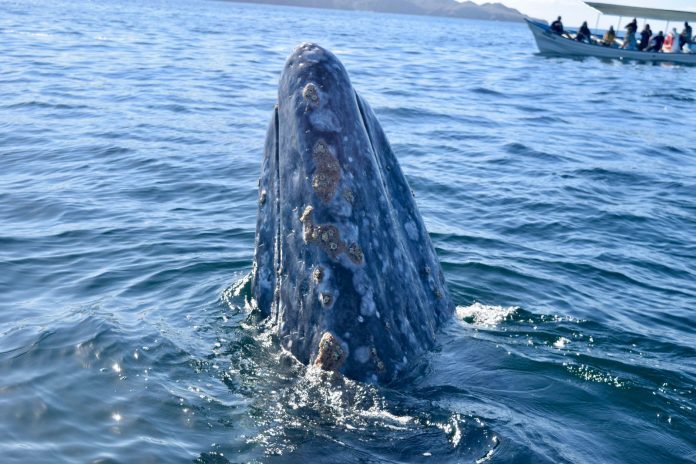Gray whale numbers have risen dramatically in Baja California Sur, say Mexican conservation agencies.
The Ministry of Environment and Natural Resources (Semarnat) and National Commission of Natural Protected Areas (Conanp) revealed that a recent census of the whales — taken from December 2022 to mid-February 2023 — has revealed a total of 1,364 in the El Vizcaíno Biosphere, located in Mulegé, Baja California Sur.

Overall, numbers increased by 238 from the 2021-2022 census — a rise of more than 20%.
In the Ojo de Liebre Lagoon, 1,246 whales were counted, with another 118 spotted in San Ignacio. Of the whales counted, 491 were newborn calves, providing researchers with hope for the future.
Authorities believe that this increase in whale numbers is the result of 68 years of strong protections from commercial fishing. These protections have helped to remove gray whales from the endangered list.
El Vizcaíno, which was declared a national reserve in 1988, is a major breeding ground for many of the world’s gray whales and has become a hotspot for ecotourism in Mexico, especially around breeding season. The 36,000 hectares form one of the most important whale habitats in the world.
Gray whales will swim to El Vizcaíno from Alaska to take advantage of the shallow waters and plentiful food available during the early months of the year.
The gray whale is currently listed as needing “special protection” by the Mexican government.
With reports by El País
